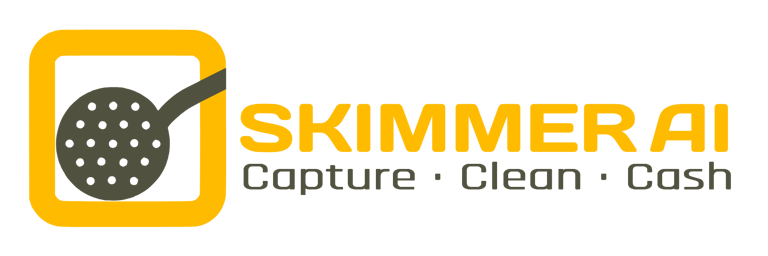Extract Actionable Insights from Noise
A deep dive can unearth invisible patterns among dispersed datasets
Case Study 1 :
Small retail vendors often deposit daily cash receipts into their bank accounts. Many operate largely in cash, sourcing materials and selling produce without formal invoices. Vendors near an international border pooled informal cash flows across both systems. For some, input costs were near zero because they grew their own vegetables and poultry or used barter systems with suppliers. A vigilant revenue officer asked Skimmer AI to analyse whether all such vendors were operating normally. Months of analysis uncovered a cluster of businesses depositing cash with similar patterns across businesses, ranging from eateries, to butchers, to cobblers and barbers. Despite being local enterprises, their declared profits were disproportionately higher than expected total consumption for their product and service categories in the geography. Multiple households had all adult members saving small sums in different banks for over months, then simultaneously making inter‑state transfers for some new business or buying properties at high costs. A conditional restriction placed on those accounts suddenly caused hundreds of outbound payments to fail in one week, but the account holders never visited the bank after the synchronous payment rejections. As their daily deposits also stopped, the case was escalated to specialized government agencies for further review.


Case Study 2 :
A regional snacks and condiments manufacturer, selling through a mix of traditional grocery stores and small modern trade outlets, repeatedly faced deep month‑end discounting as excess inventory piled up on retail shelves. National competitors forced them a steep increase in advertising spend, yet month‑on‑month net profits kept declining. Skimmer AI performed a churn and cohort analysis, ran focused customer intercept surveys on social media, and analysed point‑of‑sale velocity by store type. Insights showed the brand had strong purchase intent among urban commuters and neighbourhood shoppers but poor in‑store visibility and low impulse purchase conversion. Following our recommendations, the company stopped bidding for large billboards against multinational brands and reallocated budget to targeted low‑cost rack spaces, endcap placements, and short, trackable offers at high‑traffic retailers. Within two months of rolling out the new GTM plan, sell‑through improved, and inventory days dropped. Net profits rebounded strongly, with performance improving to roughly 200% above industry average for the segment.


Case Study 3 :
A family owned cutlery manufacturer saw unexplained, gradually growing losses over several years. The business relied on bank transfers for purchases, while weekly payments to labours and smaller sales were settled in cash. Detailed physical audits, reconciliations, and cross-checks failed to identify the issue, so they engaged us to extract and analyse data from five years of legacy handwritten bills and challans. After painstakingly digitizing and mining the documents with Skimmer AI tools, we discovered a series of delivery notes and challan cum gate passes that had no corresponding invoices, and instead matched entries created from some unaccounted bill books. Company procedure required invoices, delivery notes, and challans to be countersigned together by a director after scrutiny. Using intelligent data extraction and pattern recognition, Skimmer AI exposed a trickle of discrete pilferage orchestrated by an accounts clerk and provided evidence for remediation and strengthened internal controls.


Case Study 4 :
Skimmer AI partnered with a not‑for‑profit to support large rural medical camps where patient registrations surged unexpectedly. Volunteer health workers interviewed each registrant, recorded symptoms, and photographed existing medical records using mobile phones. The noisy images of handwritten prescriptions, x‑ray films, and other documents were analysed by Skimmer AI to extract structured insights and link them to each registration for effective patient triage and workflow optimization. On the day of the camp, a team of general practitioners, gynaecologists, ophthalmologists, dentists, nurses, and volunteers used the preprocessed patient summaries to treat patients with extraordinary efficiency. The team carried over 100 reading glasses for presbyopia cases, which were mapped and fitted on site. The pretriage analysis also identified urgent referrals and medication reconciliation needs, reducing wait times and avoiding duplicate diagnostics while improving rural health outcomes and resource allocation.


Deep-dive Analytics
High noise-to-signal data analytics turns messy, low-quality datasets into reliable business insights using robust data cleaning, advanced anomaly detection, and AI driven pattern recognition. This approach improves decision-making by increasing data accuracy and reducing false positives, which lowers operational risk and prevents costly errors. It enables better customer segmentation, targeted marketing, and churn prediction by extracting meaningful signals from transactional, sensor, and mobile data streams. Scalable pipelines and automated feature engineering speed up time to insight and cut data processing costs. Integrated dashboards and explainable models make insights action-ready for product, operations, and finance teams, improving ROI and driving measurable business outcomes.


Data Ingestion
Data Harmonization
Data Modelling
Data Analysis
Data Visualization
Data Interpretation
Data Storytelling
Unlock Insights Today
Transform your data into actionable intelligence.
